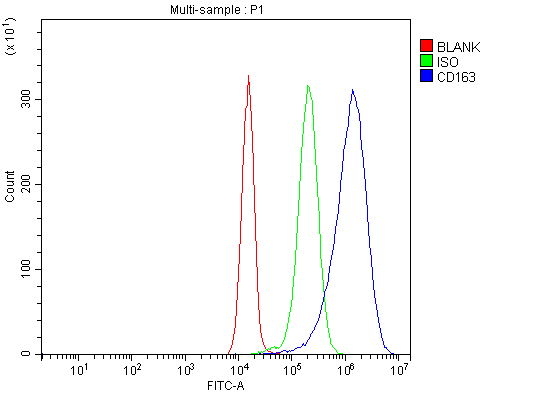CD163 antigen is a 130 kDa membrane glycoprotein, a member of the cysteine-rich receptor-capturing superfamily, and the hemoglobin-haptoglobin receptor. CD163 protects tissues from oxidative damage mediated by free hemoglobin and may play a role in iron uptake and recycling through hemoglobin/haptoglobin endocytosis and subsequent heme degradation.
CD163 is exclusively expressed on the surface of human monocytes and macrophages, which mainly develop in the late phase of inflammation. Specifically, CD163 antibody is present in all circulating monocytes and most tissue macrophages except those found in the mantle region and germinal center of lymphoid follicles, interdigital reticulum cells, and Langerhan cells.

CD163 was present in all CD14+ monocytes and most CD64+ monocytes and showed higher expression in CD16+ monocytes. CD163 is upregulated in mononuclear phagocytes by IL-10, IL-6 and dexamethasone. Lipopolysaccharide (LPS) and phorbol myristate acetate (PMA) induce the release of CD163 from the cell surface into plasma or cell supernatants.
CD163 binds to calcium and the pH-dependent hemoglobin/haptoglobin complex and shows a higher affinity for hemoglobin and the multimeric haptoglobin complex of the HP1F phenotype than for the hemoglobin and dimeric haptoglobin complex of the HP phenotype.
In addition, CD163 also induces an intracellular signaling cascade that includes tyrosine kinase-dependent calcium mobilization, inositol triphosphate production, and IL6 and CSF1 secretion. The human CD163 gene encodes a protein of 1156 amino acids with a predicted mass of 125.5 kDa.